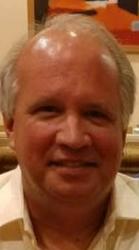Desire to create a level playing field motivates F1 to install new rules.
With the new rules for 2021 being changed due to the Coronavirus pushed back one year to 2022, the FIA–the world’s main governance body–decided on Tuesday that no Formula 1 team will be allowed to develop the aerodynamic portion of their race cars until the end of this year.
It had already been mentioned that the new aero packages for 2021 were in place, but the Coronavirus outbreak has put this matter on hold. Although the decision will be delayed, it’s uncertain when the season will get underway.
The teams will not be able to work on two projects–for this season and the 2022 season. This decision was unanimous, voted on by all the teams, and by the World Motor Sport Council (WMSC). The new budget cap will also be in effect next season.
The budge decisions reflect a concern that the top teams would otherwise spend lots of money before the $175 million gap took place in 2021. If that happened, then those teams would have a considerable advantage. But with a budget gap in place, all teams will be on an even playing field.
To save costs for next season, all teams have agreed to use this year’s chassis in 2021. Additional measures are being considered to keep costs down, too. Also, Mercedes’s famous duel-action steering wheel (DAS), which was being tested at the recent pre-season test in Spain, will be outlawed for next year.
The WMSC also permitted Formula 1 and the FIA to change the remaining 2020 race calendar. The FIA needs 60 percent of the teams to vote on making additional changes to the regulations.
Currently, all teams are in the middle of a three-week shutdown, which normally would have taken place in August. This shutdown applies to the engine departments, too, which must halt development in March as well as in April.
Finally, the FIA has adjusted the post-season test, which usually takes two to four days to complete. However, this time, young drivers can participate for one day only, and only if they had raced in two or fewer grand prix.
There’s no mistake about this: the new rules will be interesting to watch once racing gets back on schedule.
















